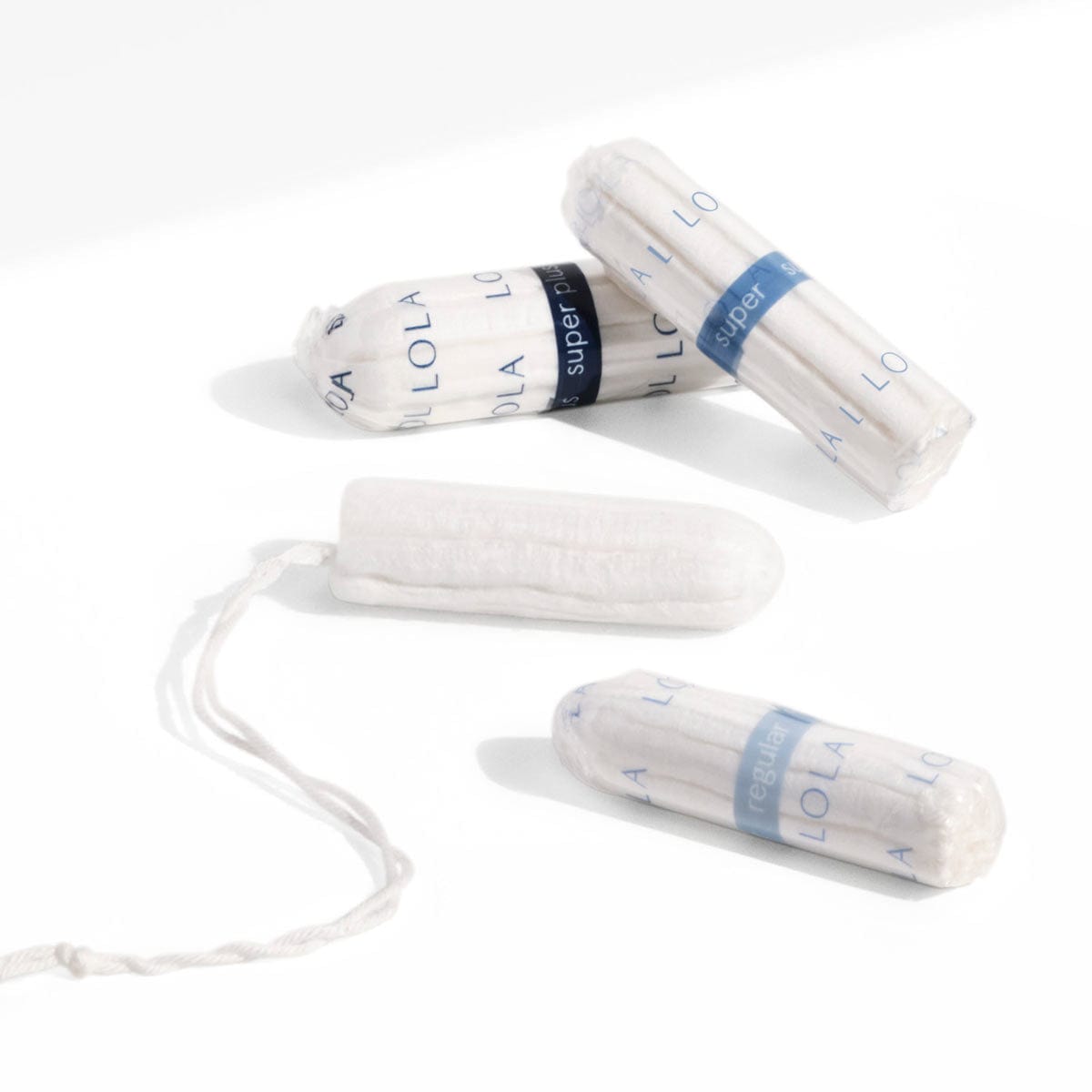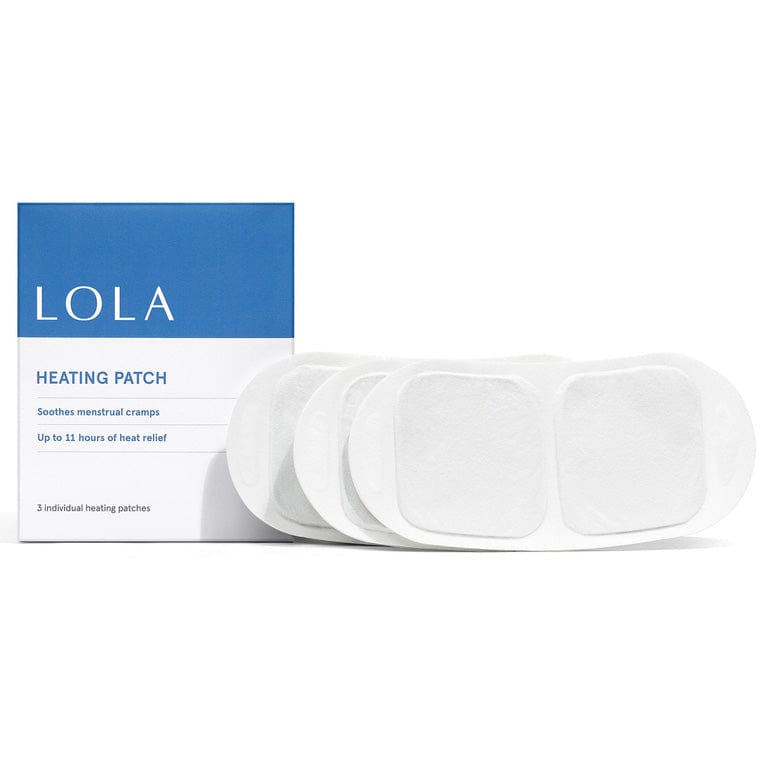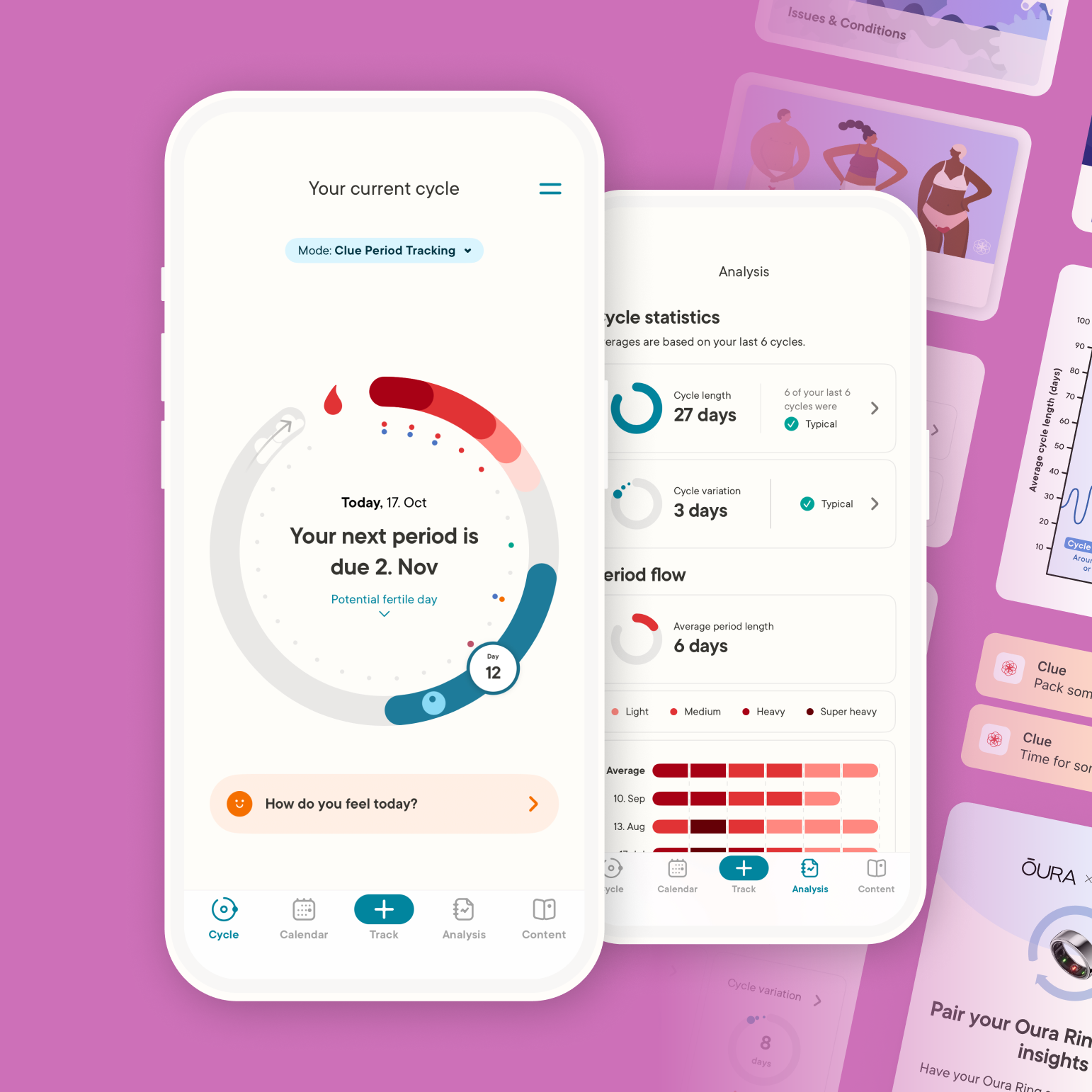Menopause is defined as the age at which women get their final period, diagnosed after a full year passes without menstruation. At menopause, the ovaries stop releasing eggs, and producing estrogen and progesterone, and women are no longer fertile. Women hit menopause at age 51 on average, but it can happen as early as 40 or as late as 60.
But before that final period, women experience a transitional phase that can last anywhere from 5-10 years, called perimenopause. During perimenopause, which can start anywhere from the mid-30s to the late 40s, hormones are in flux as the body prepares for the end of its reproductive era. Hormonal changes in perimenopause can cause a whole host of perimenopause symptoms, from irregular bleeding and spotting, to heightened PMS and changes in mood; hot flashes, night sweats, and insomnia; joint and muscle pains, changes to hair and skin, and changes to sexual arousal; bloating and gastrointestinal issues, and even heart palpitations.
Discover our women's sexual wellness products, designed for comfort, safety, and peace of mind with gynecologist-approved ingredients. Shop Women’s Sexual Wellness Products
Hormonal Changes in Perimenopause
While the ovaries begin to decline during perimenopause, eventually producing less estrogen and progesterone along the way to menopause, hormonal fluctuations become heightened and erratic, often resulting in higher spikes of estrogen or progesterone, and lower lows. While ovulation might occur more infrequently, women are typically still fertile during perimenopause and can get pregnant.
Similarly to how teenagers experience up-and-down hormones and irregular periods until they settle into a more uniform rhythm, “that same fluctuation occurs as we end our menstrual lives,” explains Dr. Melanie L. Marin, director of the Menopause Program in the Raquel and Jaime Gilinski Department of Obstetrics, Gynecology and Reproductive Science at the Mount Sinai Health System.
This fluctuation in hormones can cause perimenopause symptoms in the form of irregular bleeding and spotting. Quick health class refresher: During a textbook menstrual cycle, rises in estrogen and progesterone team up to prepare the body for potential pregnancy–thickening the uterine lining, and stimulating egg release, aka ovulation. If fertilization of the egg doesn’t happen, those hormone levels drop and the uterine lining sheds, aka you get your period.
Enjoy peace of mind with hypoallergenic, non-toxic organic cotton tampons that protect your body and the environment. Buy Now
But during perimenopause, with the hormonal levels all over the place, your cycle can get confused. Low levels of estrogen can mean a thinner uterine lining, resulting in a lighter and shorter period, so then your next period comes sooner than 28 days. High levels of estrogen, particularly when they occur in comparison to progesterone, can cause heavier bleeding that might last longer. Month to month, the fluctuations might look different.
In general, menstrual irregularities during perimenopause are common, with women experiencing perimenopause bleeding like spotting in between periods, having periods that are closer together, periods that last longer or shorter, or skipping periods.
What’s the difference between spotting and abnormal bleeding?
While spotting and menstruating irregularly can be common perimenopause symptoms, women should discuss any changes in bleeding with their doctor to make sure nothing is abnormal.
“Spotting in between periods, even if it’s just a little bit, needs evaluation,” according to Marin. “Periods lasting longer than 10 days or coming more frequently than every 21 days should be evaluated.”
Marin explained that perimenopause bleeding including prolonged bleeding or bleeding that’s too frequent can be indicators of endometrial cancer or uterine cancer. It could also signal a thyroid disorder.
Heavy or excessive bleeding is another reason to see your doctor. Soaking through and having to change tampons or pads every hour or couple hours for several hours, and getting up in the middle of the night to change them, means you’re bleeding a potentially unsafe amount.
Even if menstrual irregularities during perimenopause might just be due to hormonal fluctuations, it’s important to rule out something more serious.
Enjoy peace of mind with hypoallergenic, non-toxic organic cotton tampons that protect your body and the environment. Buy Now
Discover the comfort of organic pads with wings, designed to provide next-level protection and a perfect fit. Shop Organic Pads with Wings
When to see a doctor for perimenopause
If you’re spotting or bleeding in between periods, getting your period more often than every 21 days, or experiencing periods that last longer than 10 days, you should schedule an appointment with your OB/GYN to rule out a thyroid issue or endometrial or uterine cancer.
To check for cancer, your OB/GYN will perform a transvaginal ultrasound and take a biopsy of the lining of the uterus to make sure there aren’t abnormal cells. Thyroid-stimulating hormones are typically checked using a blood test.
Aside from perimenopause bleeding, women should see their OB/GYN if any other perimenopause symptoms are affecting their quality of life.
Because perimenopause can cause such a wide range of symptoms, women often seek out treatment at different specialists. But the culprit is often hormonal changes.
“If you're in the perimenopausal stage of life, anywhere from 35 on, and you’re having a whole crazy host of [symptoms], talk to your gynecologist,” Marin recommends.
The gold standard treatment for managing perimenopause, Marin explains, is birth control pills, typically formulated with a low dose of estrogen (10-20 micrograms), prescribed for 24 instead of 21 days to maintain a steadier dose throughout the month. The even-keel dose of hormones helps balance out the hormonal fluctuations caused by perimenopause, which are the underlying factor behind so many perimenopause symptoms, explains Marin.
If certain patients can’t take estrogen, because of clotting disorders or high blood pressure, or because they’ve reacted poorly to estrogen in birth control pills in the past, progesterone-only pills are an option, as are hormonal IUDs, which typically use only progesterone. Another bonus to progesterone: it can help with sleep. Additional treatments beyond the hormonal may include Gabapentin for hot flashes; Metformin for bloating and gastrointestinal bloating; and SSRIs for anxiety and heart palpitations.
Managing perimenopause symptoms
Aside from management in the form of birth control pills or an IUD, making lifestyle changes for perimenopause is crucial to weathering the hormonal changes. Daily exercise, eating a balanced diet of fruits and vegetables, fiber, and protein, limiting alcohol, and getting enough sleep can help manage the peaks and valleys of hormonal fluctuations, and ensure good perimenopause health.
Choose LOLA’s clean period products for organic, hypoallergenic protection that’s safe and effective. Shop Organic Period Products
What perimenopause feels like
For many women, perimenopause can come out of nowhere, with such a wide range of symptoms it's not always clear what’s happening.
Helen Ho, a 45-year-old urban planner, started going through perimenopause a year ago. “It started happening all at one. I thought I was sick or losing my mind,” she remembers.
The most obvious perimenopause symptom for Ho was getting her period around every two weeks, and having it sometimes last for two weeks. Which was taxing enough. But there was more happening beyond irregular perimenopause bleeding.
“I had so many symptoms I had to make a note on my phone to keep track of it all, because it was too much,” she says.
Ho’s PMS got significantly worse than she had ever experienced, with mood swings, and fits of sadness and anger. She would get a piercing headache every day at 3pm, and occasional severe heartburn. Insomnia and a frequent need to urinate would keep her up at night. Her eyes began getting very dry, and she noticed her skin was thinner and prone to irritation. Puzzling perimenopause symptoms, like “frozen shoulder”—feeling her shoulders lock up for periods of time—started happening. And she could no longer drink even a small amount of alcohol without getting nauseous.
Thankfully, seeing her OB/GYN and getting prescribed birth control “really saved my life,” she says. Ho now takes Portia, which has a low-dose progesterone and estrogen formulation.
While the pills haven’t been a cure-all, they’ve helped Ho manage her perimenopause symptoms, and return to a sense of normalcy. “[The symptoms] still happen but at a much lower frequency. For example, I still get headaches every once in a while, but it’s not as intense and a lot less frequent,” she explains.
Laurie Nowling and Dodie Dierkes were so blindsided by the onset of perimenopause–and the lack of education and transparent discussion about a phase of life every woman goes through–that they founded Shebang. It’s an online-based community for women to find support and resources to learn about and get help managing perimenopause. “We want to get the word out, share our experiences and learn from others’ stories,” Nowling explains.
DIerkes and Nowling have both gotten relief for their perimenopause symptoms through hormone replacement therapy in the form of estrogen and progesterone creams or capsules, testosterone pellets, and holistic treatments like magnesium spray, which they say helps with sleep. Lifestyle changes, like daily walking, cutting down on alcohol, and eating a healthier diet have also done wonders.
They encourage women to keep track of their symptoms, be prepared to advocate for themselves at the OB/GYN, and remember that perimenopause is normal, and there are ways to manage it.
“When [people in your life] tell you you’re crazy, you’re not crazy,” says Dierkes. “The hormones affect everything. Go get help!”
Enjoy peace of mind with hypoallergenic, non-toxic organic cotton tampons that protect your body and the environment. Buy Now













